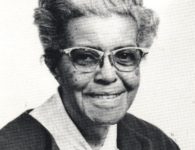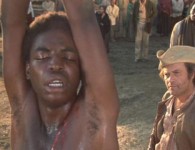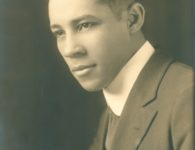By M. Swift
In part one we looked at the details of the Axe Syndicate, a gang that targeted mostly shopkeepers in the early 1920s. In addition to immigrant shopkeepers, interracial couples were said to have been by targeted by the gang. Also, Black people with previous run-ins with the law were the main people in the pool of suspects.
AFTERMATH
Several people were arrested either on confession to the crimes or eyewitness testimony. Most brought in were lumped in with the “Axe Syndicate” and eventually did various sentences. Pearl Jackson, Odell Jackson, and Peyton Johnson were sentenced to hang in 1924. Ed Jackson was lumped into this as well and given life.
Since scopolamine was used to coax confessions out of them, it was believed that they didn’t remember making the confessions. Scopolamine works by putting the person it is administered to in a state where they’re supposedly unable to lie.
Similar to beating or starving a “confession” out of someone, it wouldn’t have held up in court without concrete evidence. As a result, all four sentences were commuted. Ed Jackson got 10 years while Johnson and the Jackson couple got their death sentences reversed.
In the Mantione slayings, a Lillie Byrd, was given double 99-year sentences. It was revealed she owed the family money and so had motive enough.
SUSPECTS FROM THE BLACK COMMUNITY
The main theory is this was a ring of Black ne’er-do-wells attacking the city’s shopkeeping community. Witnesses pointed the finger at Black people and the press ran with it. The PD had the popular theory and a “director’s cut” theory for murders that didn’t fit the common M.O: the “Negro organization” hellbent on taking out interracial couples and canoodlers.
Also, say it was Black people committing all the attacks. There was very little concrete evidence to say it was these particular Black people. Some of these cases have legs such as Lillie Byrd, but there are unknowns in this case. Did she work alone, did she hire some muscle to handle the murders?
THE WEAPON
This was the very early 20th century and an axe would’ve been a weapon of opportunity. Almost every household had one somewhere inside or outside the home.
Look at well-known cases such as the Villisca Axe Murders in Iowa and the Axeman of New Orleans. All happened at a time when an axe was almost as essential as a broom.
The weapon was a tool that the attacker or attackers wouldn’t necessarily need to bring with them. If they cased the store, they would likely have some idea where the shopkeeper or shopkeeper’s neighbor kept their axe.
MOTIVES: A TALE OF TWO GROUPS
Some of these murders would fit the overarching motive and others just don’t. Yes, the slayings of interracial couples and those who aren’t in interracial relationships or shopkeepers.
Either all the attacks aren’t Syndicate attacks or that they are Axe Syndicate attacks, but are “side projects” to the core group.
In the latter case, these could’ve been attacks during lean times for robberies. In the later case, while the attacks on shopkeepers weren’t somewhat organized. People were wounded, but for the most not killed. Small children were typically spared.
Some could be copycat attacks. Of course, this depends whether you believe it’s a hyper-violent group or extortionists beating people as the original perpetrators.
SUSPECTS VIA ORGANIZED CRIME
Some of the more non-lethal crimes could’ve been by a crime family that existed in Birmingham until the late 1930s. If shopkeepers owed money or refused to pay survived, they probably wouldn’t be quick to confess. If they did say anything it could’ve been “(nondescript) Black people did it.”
One of the surviving members of the Baldone family—attacked in the summer of 1921—believed that Black people were unfairly targeted by the police. He also believed that the shopkeepers were the targets of Black Hand extortion tactics.
This theory also occurred with the Axeman of New Orleans which ended a month prior to the first Syndicate attacks. The Axeman case took place during early mob expansion into the South and shopkeepers were early victims.
THE CASE
These crimes happened at a time of discrimination towards Black people and immigrant populations. This was also a time when detective work was still developing and truth serum seemed okay to use.
Given the history of law enforcement at the time in the South and organized crime’s expansion into the South, we may never find out the specifics of the “group.” For now, amateur sleuthing and connecting what dots are available will have to do.
SOURCES
http://www.bhamwiki.com/w/Axe_syndicate
http://blog.al.com/spotnews/2013/02/the_trial_of_birminghams_axe-m.html





















No comments